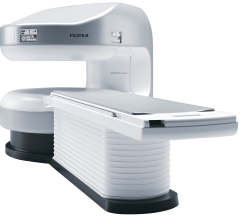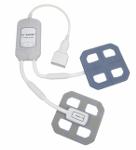The ITN team has just returned from the Healthcare Information and Management Society’s (HIMSS15) annual conference in Chicago, where more than 43,000 healthcare IT professionals gathered to learn about and share information on optimizing healthcare outcomes using information technology.
Based on its ongoing analysis of the medical imaging market, Frost & Sullivan recognizes Toshiba America Medical Systems, Inc. with the 2015 North American Frost & Sullivan Award for Medical Imaging Company of the Year. The company has changed the way it approaches the imaging market by offering scalable, upgradable technologies and a patient-focused view of partnerships. This value-based approach positions the company for continued success in the medical imaging market by allowing it to re-orient many of its imaging customers away from a cyclical sales model and toward deeper, more renewable strategic partnerships.
Texas Health Presbyterian Hospital Plano is the first hospital in North Texas to offer full-body three-dimensional imaging with a lower dose of radiation than traditional imaging.
eHealth Saskatchewan plays a vital role in providing IT services to patients, health care providers, and partners such ...
One life-threatening complication of lung cancer surgery is the formation of blood clots in the lungs (also called pulmonary embolism, PE) or in the legs (also known as deep vein thrombosis, DVT). Together, they would be defined as venous thromboembolic events (VTE). Several presentations at AATS 2015 shed new light on this serious problem. In the first prospective study of its kind, the incidence of VTE was found to be higher than previously reported, with a 5.4 percent VTE-specific mortality rate. Of concern to clinicians, most events were asymptomatic and occurred after patients were discharged from the hospital. The second report highlights the importance of screening for VTEs, especially since the majority of lower extremity VTEs found after pneumonectomy would have gone undiagnosed and untreated without screening. The third report describes a risk assessment tool for VTEs that is applied for the first time to predict an individual’s risk of VTEs after lung cancer surgery, which can help clinicians decide whether prolonged anti-clotting therapy is warranted.
The U.S. Food and Drug Administration (FDA) is alerting patients who had mammograms at Coastal Diagnostic Center in Pismo Beach, California, on or after Feb. 24, 2013, about possible problems with the quality of their mammograms. This does not mean that the results of the mammograms were inaccurate, but it does mean that the patients should consider having their mammograms re-evaluated at a Mammography Quality Standards Act (MQSA)-certified facility to determine if they need a repeat mammogram or additional medical follow-up.
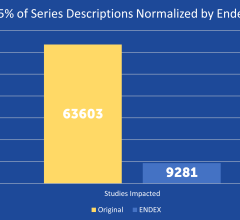
SPONSORED CONTENT — EnsightTM 2.0 is the newest version of Enlitic’s data standardization software framework. Ensight is ...
Proton Partners International Limited announced the appointment of global partners in its plans to build three proton beam therapy centers in the U.K. Partner organizations will provide state-of-the-art clinical equipment and technology solutions to the company.
While most women understand the importance of health screenings, an estimated 72 million have missed or postponed a ...
Two new studies show that increasing the dose of radiotherapy given to children with an intracranial ependymoma, a form of cancer of the central nervous system, can significantly improve their survival. Results of both studies were presented at the third European Society for Radiotherapy and Oncology (ESTRO) Forum in Barcelona, Spain.
The American College of Radiology (ACR) announced its support for the Diagnostic Imaging Services Access Protection Act (H.R. 2043) which seeks to prospectively repeal the existing 25 percent Multiple Procedure Payment Reduction (MPPR) applied to Medicare reimbursement. The MPPR is applied for interpretation of advanced diagnostic imaging scans performed on the same patient, in the same session, on the same day.
A first-in-human prostate cancer study in the Journal of Molecular Imaging and Biology showed initial safety, biodistribution and dosimetry results with [18F]DCFPyL, a second-generation fluorine-18 labeled small-molecule prostate-specific membrane antigen (PSMA) inhibitor. The imaging biomarker has been developed at Johns Hopkins University in Baltimore by study co-author Martin G. Pomper, M.D., Ph.D.
Fujifilm’s APERTO Lucent is a 0.4T mid-field, open MRI system addressing today’s capability and image quality needs ...
Ultrasound has become an essential tool for diagnostic and procedural uses in the critical care environment. The May issue of Anesthesia & Analgesia outlines a new set of basic ultrasound learning skills developed specifically for use in anesthesiology-critical care medicine (ACCM) training programs.
Kaiba was just a newborn when he turned blue because his little lungs weren’t getting the oxygen they needed. Garrett spent the first year of his life in hospital beds tethered to a ventilator, being fed through his veins because his body was too sick to absorb food. Baby Ian’s heart stopped before he was even six months old.
With higher deductibles and more price-conscious healthcare consumers, as a result of the Affordable Care Act, improving the performance, comfort and speed of MRI scans can be an important strategy for imaging centers that must compete by offering the best patient care and experience.
SPONSORED CONTENT — Fujifilm’s latest CT technology brings exceptional image quality to a compact and user- and patient ...
Researchers studying cancer and other invasive diseases rely on high-resolution imaging to see tumors and other activity deep within the body’s tissues. Using a new high-speed, high-resolution imaging method, Lihong Wang, Ph.D., and his team at Washington University in St. Louis were able to see blood flow, blood oxygenation, oxygen metabolism and other functions inside a living mouse brain at faster rates than ever before.
Varian Medical Systems last week unveiled a radiotherapy platform designed to offer clinics an affordable option for implementing advanced image-guided radiotherapy. Varian's VitalBeam system is a cost-effective technology package for offering high-quality, high-throughput radiation therapy, and for expanding clinical capabilities over time.
Brainlab expanded on its “Elements” strategy for treatment of brain and spine tumors with the introduction of automated stereotactic radiosurgery (SRS) planning tools. Announced at the third European Society for Therapeutic Radiology and Oncology (ESTRO) Forum in Barcelona, Spain, the SRS tools enable on-the-fly generation of consistent treatment plans for volumetric arc therapy (VMAT) delivery.
Volpara Solutions announced the release of VolparaDensity version 3.1 at the Society of Breast Imaging’s SBI/ACR Breast Imaging Symposium in Orlando, Florida, April 25-28.
Ion Beam Applications S.A. (IBA) and Pravida Bau GmBH announced an agreement to supply integrated single-room proton therapy solutions to customers in Europe.
Results from a randomized controlled trial comparing permanent radioactive implants (brachytherapy) with dose-escalated external beam radiotherapy in patients with prostate cancer showed brachytherapy patients were twice as likely to be cancer-free five years later.
The American Society of Radiologic Technologists (ASRT) has introduced Low-Dose Computed Tomography (LDCT), an online education product designed to teach radiologic technologists LDCT screening techniques for patients with lung cancer. The module also provides guidance for radiology managers looking to provide reimbursable LDCT services to patients in the Medicare program.
Radiotherapy using protons can deliver more accurate treatment to a tumor while reducing the dose to surrounding tissue. However, in mobile organs such as the lung, precise targeting of the dose is difficult. Now researchers have succeeded in making a model of breathing movement that allows for the precise measurement of narrow beams to a dummy tumor by simulating the motion and physical properties of the chest anatomy in a model, which was presented at the 3rd European Society for Radiotherapy and Oncology (ESTRO) Forum in Barcelona, Spain.

 May 04, 2015
May 04, 2015 

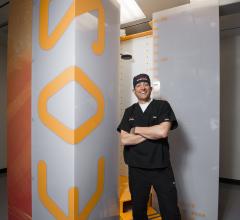

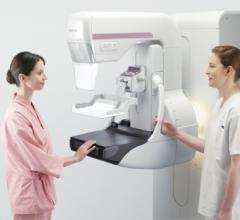

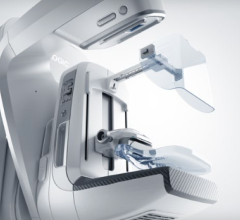


![prostate cancer, [18F]DCFPyL, PSMA, biomarker, Johns Hopkins, WMIS](/sites/default/files/styles/content_feed_medium/public/Prostate%20cancer%20F18.jpg?itok=QYOFHfKK)
